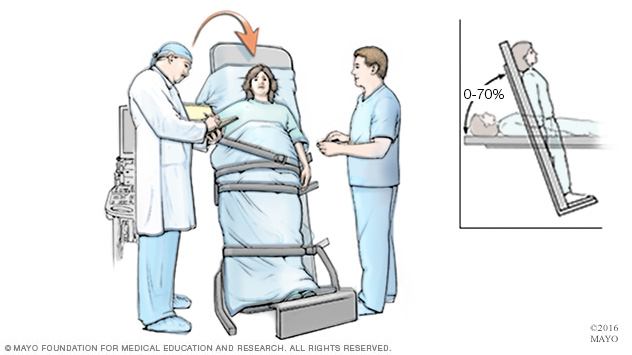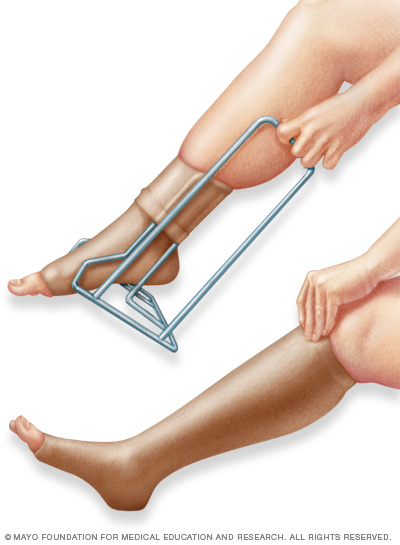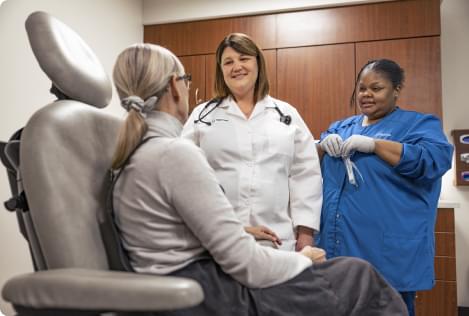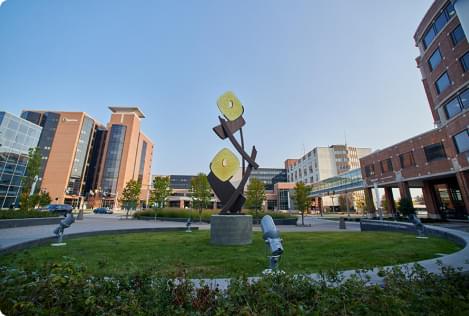Overview
Low blood pressure is generally considered a blood pressure reading lower than 90 millimeters of mercury (mm Hg) for the top number (systolic) or 60 mm Hg for the bottom number (diastolic).
What's considered low blood pressure for one person might be OK for someone else. Low blood pressure might cause no noticeable symptoms, or it might cause dizziness and fainting. Sometimes, low blood pressure can be life-threatening.
The causes of low blood pressure range from dehydration to serious medical conditions. It's important to find out what's causing low blood pressure so that it can be treated, if necessary.
Types
Types of low blood pressure include:
- Orthostatic hypotension (postural hypotension). This is a sudden drop in blood pressure when standing from a sitting position or after lying down. Causes include dehydration, long-term bed rest, pregnancy, certain medical conditions and some medications. This type of low blood pressure is common in older adults.
- Postprandial hypotension. This drop in blood pressure occurs 1 to 2 hours after eating. It's most likely to affect older adults, especially those with high blood pressure or autonomic nervous system diseases such as Parkinson's disease. Eating small, low-carbohydrate meals, drinking more water, and avoiding alcohol might help reduce symptoms.
- Neurally mediated hypotension. This is a blood pressure drop that happens after standing for long periods. This type of low blood pressure mostly affects young adults and children. It might result from miscommunication between the heart and the brain.
- Multiple system atrophy with orthostatic hypotension. Also called Shy-Drager syndrome, this rare disorder affects the nervous system that controls involuntary functions such as blood pressure, heart rate, breathing and digestion. It's associated with having very high blood pressure while lying down.
Symptoms
Low blood pressure (hypotension) symptoms may include:
- Blurred or fading vision
- Dizziness or lightheadedness
- Fainting
- Fatigue
- Trouble concentrating
- Nausea
For some people, low blood pressure may be a sign of an underlying health condition, especially when it drops suddenly or occurs with symptoms.
A sudden fall in blood pressure can be dangerous. A change of just 20 mm Hg — a drop from 110 mm Hg systolic to 90 mm Hg systolic, for example — can cause dizziness and fainting. And big drops, such as those caused by uncontrolled bleeding, severe infections or allergic reactions, can be life-threatening.
Extreme low blood pressure can lead to a condition known as shock. Symptoms of shock include:
- Confusion, especially in older people
- Cold, clammy skin
- Decrease in skin coloration (pallor)
- Rapid, shallow breathing
- Weak and rapid pulse
When to see a doctor
If you have symptoms of extreme low blood pressure (hypotension) or shock, seek emergency medical help.
Most health care providers consider blood pressure to be too low only if it causes symptoms. Occasional minor dizziness or lightheadedness can be caused by many things, such as spending too much time in the sun or in a hot tub. It's important to see a health care provider to get a correct diagnosis.
If you have consistently low blood pressure readings but feel fine, your provider may just monitor you during routine health checkups. It can be helpful to keep a record of your symptoms, when they occur and what you're doing at the time.
Causes
Blood pressure is determined by the amount of blood the heart pumps and the amount of resistance to blood flow in the arteries. A blood pressure measurement is given in millimeters of mercury (mm Hg). It has two numbers:
- Systolic pressure. The first (upper) number is the pressure in the arteries when the heart beats.
- Diastolic pressure. The second (bottom) number is the pressure in the arteries when the heart rests between beats.
The American Heart Association categorizes ideal blood pressure as normal. An ideal blood pressure is usually lower than 120/80 mm Hg.
Blood pressure varies throughout the day, depending on:
- Body position
- Breathing
- Food and drink
- Medications
- Physical condition
- Stress
- Time of day
Blood pressure is usually lowest at night and rises sharply on waking. Certain health conditions and use of medications may cause low blood pressure.
Conditions that can cause low blood pressure
Medical conditions that can cause low blood pressure include:
- Pregnancy. Changes during pregnancy cause blood vessels to expand rapidly. The changes may cause blood pressure to drop. Low blood pressure is common in the first 24 weeks of pregnancy. Blood pressure usually returns to pre-pregnancy levels after giving birth.
- Heart and heart valve conditions. A heart attack, heart failure, heart valve disease and an extremely low heart rate (bradycardia) can cause low blood pressure.
- Hormone-related diseases (endocrine disorders). Conditions affecting the parathyroid or adrenal glands, such as Addison's disease, may cause blood pressure to drop. Low blood sugar (hypoglycemia) and, sometimes, diabetes also may lower blood pressure.
- Dehydration. When the body doesn't have enough water, the amount of blood in the body (blood volume) decreases. This can cause blood pressure to drop. Fever, vomiting, severe diarrhea, overuse of diuretics and strenuous exercise can lead to dehydration.
- Blood loss. Losing a lot of blood, such as from an injury or internal bleeding, also reduces blood volume, leading to a severe drop in blood pressure.
- Severe infection (septicemia). When an infection in the body enters the bloodstream, it can lead to a life-threatening drop in blood pressure called septic shock.
- Severe allergic reaction (anaphylaxis). Symptoms of a severe allergic reaction include a sudden and dramatic drop in blood pressure.
- Lack of nutrients in the diet. Low levels of vitamin B-12, folate and iron can keep the body from producing enough red blood cells (anemia), which can lead to low blood pressure.
Medications that can cause low blood pressure
Some medications can cause low blood pressure, including:
- Water pills (diuretics), such as furosemide (Lasix) and hydrochlorothiazide (Microzide)
- Alpha blockers, such as prazosin (Minipress)
- Beta blockers, such as atenolol (Tenormin) and propranolol (Inderal, Innopran XL, Hemangeol)
- Drugs for Parkinson's disease, such as pramipexole (Mirapex) or those containing levodopa
- Certain types of antidepressants (tricyclic antidepressants), including doxepin (Silenor) and imipramine (Tofranil)
- Drugs for erectile dysfunction, including sildenafil (Revatio, Viagra) or tadalafil (Adcirca, Alyq, Cialis), particularly when taken with the heart medication nitroglycerin (Nitrostat, Nitro-Dur, Nitromist)
Risk factors
Anyone can have low blood pressure (hypotension). Risk factors for hypotension include:
- Age. Drops in blood pressure on standing or after eating occur primarily in adults older than 65. Neurally mediated hypotension primarily affects children and younger adults.
- Medications. Certain medications, including some blood pressure drugs, increase the risk of low blood pressure.
- Certain diseases. Parkinson's disease, diabetes and some heart conditions may increase risk of low blood pressure.
Complications
Potential complications of low blood pressure (hypotension) include:
- Dizziness
- Weakness
- Fainting
- Injury from falls
Severely low blood pressure can reduce the body's oxygen levels, which can lead to heart and brain damage.
Diagnosis
To diagnose low blood pressure (hypotension), your health care provider will do a physical exam and ask questions about your medical history. The exam includes measuring blood pressure.
Tests
Other tests may be done to determine the cause of low blood pressure.
- Blood tests. Blood tests can help diagnose low blood sugar (hypoglycemia), high blood sugar (hyperglycemia or diabetes) or a low red blood cell count (anemia), all of which can lower blood pressure.
- Electrocardiogram (ECG or EKG). This quick and painless test measures the electrical activity of the heart. During an ECG, sensors (electrodes) are attached to the chest and sometimes to the arms or legs. Wires attached to the sensors connect to a machine that displays or prints out results. An ECG shows how fast or slow the heart is beating. It can be used to diagnose a current or previous heart attack.
- Tilt table test. A tilt table test can evaluate how the body reacts to changes in position. The test involves lying on a table that's tilted to raise the upper part of the body, which mimics the movement from horizontal to a standing position. Straps hold the body in place. Heart rate and blood pressure are monitored during the test.

Treatment
Low blood pressure (hypotension) without symptoms or with only mild symptoms rarely requires treatment.
If low blood pressure is causing symptoms, the treatment depends on the cause. For instance, if medication causes low blood pressure, your health care provider may recommend changing or stopping the medication or lowering the dose. Don't change or stop taking your medication without first talking to your care provider.
If it's not clear what's causing low blood pressure or no treatment exists, the goal is to raise blood pressure and reduce symptoms. Depending on age, health and the type of low blood pressure, there are several ways to do this:
- Use more salt. Experts usually recommend limiting salt (sodium) because it can raise blood pressure, sometimes dramatically. For people with low blood pressure, however, that can be a good thing. But too much sodium can lead to heart failure, especially in older adults. So it's important to check with a health care provider before increasing salt.
- Drink more water. Fluids increase blood volume and help prevent dehydration, both of which are important in treating hypotension.
- Wear compression stockings. Also called support stockings, these elastic stockings are commonly used to relieve the pain and swelling of varicose veins. They improve blood flow from the legs to the heart. Some people tolerate elastic abdominal binders better than they do compression stockings.
-
Medications. Several drugs are available to treat low blood pressure that occurs when standing up (orthostatic hypotension). For example, the drug fludrocortisone boosts blood volume. It's often used to treat orthostatic hypotension.
If you have long-term (chronic) orthostatic hypotension, midodrine (Orvaten) may be prescribed to raise standing blood pressure levels. This drug reduces the ability of the blood vessels to expand, which raises blood pressure.

Lifestyle and home remedies
Depending on the reason for low blood pressure, the following steps might help reduce or prevent symptoms.
- Drink more water, less alcohol. Alcohol is dehydrating and can lower blood pressure, even if drinking in moderation. Water increases the amount of blood in the body and prevents dehydration.
-
Pay attention to body positions. Gently move from lying flat or squatting to a standing position. Don't sit with legs crossed.
If symptoms of low blood pressure begin while standing, cross the thighs like a pair of scissors and squeeze. Or put one foot on a ledge or chair and lean as far forward as possible. These moves encourage blood flow from the legs to the heart.
-
Eat small, low-carb meals. To help prevent blood pressure from dropping sharply after meals, eat small meals several times a day. Limit high-carbohydrate foods such as potatoes, rice, pasta and bread.
A health care provider also might recommend drinking one or two strong cups of caffeinated coffee or tea with breakfast. Caffeine can cause dehydration, however, so be sure to drink plenty of water and other fluids without caffeine.
- Exercise regularly. As a general goal, aim for at least 30 minutes of moderate physical activity every day. Avoid exercising in hot, humid conditions.
Preparing for an appointment
No special preparations are necessary to have your blood pressure checked. Don't stop taking medications you think might affect your blood pressure without a health care provider's advice.
Here's some information to help you get ready for your appointment.
What you can do
Make a list of:
- Symptoms, including any that seem unrelated to low blood pressure, and when they occur
- Key personal information, including a family history of low blood pressure and major stresses or recent life changes
- All medications, vitamins or other supplements you take, including doses
- Questions to ask your provider
For low blood pressure, basic questions to ask your provider include:
- What is likely causing my symptoms or condition?
- What are other possible causes?
- What tests will I need?
- What's the most appropriate treatment?
- How often should I be screened for low blood pressure?
- I have other health conditions. How can I best manage them together?
- Are there restrictions I need to follow?
- Should I see a specialist?
- Are there brochures or other printed materials I can have? What websites do you recommend?
Don't hesitate to ask other questions.
What to expect from your doctor
Your provider is likely to ask you questions, including:
- Do you always have symptoms of low blood pressure, or do they come and go?
- How severe are your symptoms?
- What, if anything, seems to improve your symptoms?
- What, if anything, appears to worsen your symptoms?
- Do you have a family history of heart disease?
© 1998-2024 Mayo Foundation for Medical Education and Research (MFMER). All rights reserved. Terms of Use


